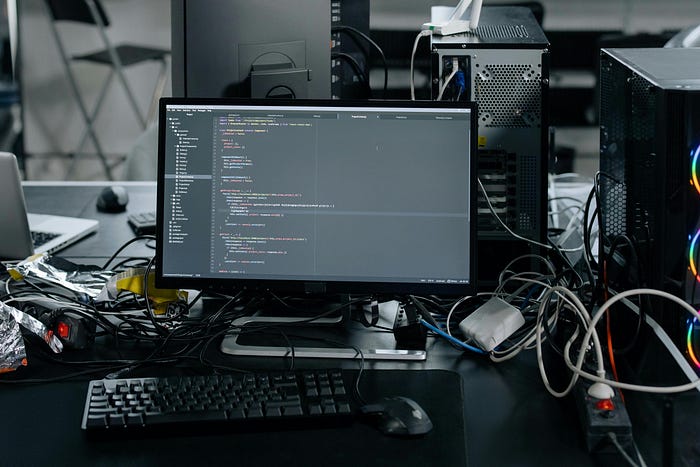Part 1: Understanding the Vulnerability Management Lifecycle
In the modern digital landscape, organizations face an ever-growing array of threats. Cyber attackers continuously exploit weaknesses in networks, servers, endpoints, and cloud environments, making vulnerability management a cornerstone of any robust cybersecurity strategy. At its core, vulnerability management is the process of identifying, evaluating, prioritizing, and remediating security flaws before they can be exploited. However, organizations often stumble not in scanning for vulnerabilities, but in converting those findings into actionable remediation—creating a gap that, if left unaddressed, can leave critical systems exposed.
1. The Vulnerability Management Lifecycle
To understand where gaps emerge, it's important to break down the vulnerability management lifecycle into its fundamental phases:
1. Asset Discovery and Inventory
○ The first step involves cataloging all hardware, software, virtual machines, cloud services, and network devices.
○ A comprehensive inventory ensures that no assets are overlooked, as even a single unmanaged server can become an entry point for attackers.
○ Automated tools like Qualys VMDR, Nexpose, and Rapid7 can assist with continuous asset discovery, identifying devices that may appear intermittently or outside traditional management channels.
2. Vulnerability Scanning
○ Once assets are inventoried, vulnerability scanners probe systems to detect misconfigurations, missing patches, outdated software, and known exploits.
○ Scans can be scheduled regularly or triggered on-demand, covering endpoints, servers, network devices, and cloud infrastructure.
○ Scanners generate detailed reports, often highlighting hundreds or even thousands of potential vulnerabilities across large environments.
3. Risk Assessment and Prioritization
○ Not all vulnerabilities are created equal. An unpatched server exposed to the internet represents far higher risk than a non-critical internal printer with a minor firmware issue.
○ Risk assessment combines factors like asset criticality, exposure, vulnerability severity (CVSS scores), and threat intelligence to determine which findings demand immediate attention.
4. Remediation and Verification
○ The final phase, remediation, is where many organizations struggle. Applying patches, changing configurations, or taking compensating controls often requires coordination between multiple teams and careful planning to avoid business disruption.
○ Verification ensures that vulnerabilities have been successfully mitigated and that remediation actions have not introduced new risks.
2. Common Challenges Bridging Scanning and Remediation
Despite technological advancements, organizations often face systemic obstacles that prevent them from fully leveraging vulnerability scans. Some of the most common challenges include:
● Volume Overload: A typical enterprise environment may generate thousands of vulnerability findings with each scan. Security teams frequently face a "needle in a haystack" problem, where prioritizing critical issues becomes difficult amidst the sheer volume.
● Fragmented Tools and Workflows: Vulnerability scanners, ticketing systems, patch management tools, and endpoint management platforms are often disconnected. The lack of integration slows down remediation, increases the risk of human error, and makes tracking progress cumbersome.
● Operational Constraints: Remediation often involves downtime or system restarts. In production environments where uptime is critical, teams may delay remediation, creating windows of exposure that attackers can exploit.
● Lack of Context: Vulnerability reports can be highly technical, but without context about business impact, asset criticality, or threat activity, security teams may misjudge the true priority of an issue.
● Skill Gaps: Implementing effective remediation requires technical expertise, knowledge of system dependencies, and understanding of potential operational impacts. Many organizations struggle with limited skilled personnel.

3. Real-World Consequences of the Gap
Failure to close the gap between scanning and remediation has tangible consequences:
● Data Breaches: Exploitable vulnerabilities left unpatched are a leading cause of breaches in healthcare, finance, and critical infrastructure sectors.
● Regulatory Fines: Compliance frameworks such as PCI DSS, HIPAA, GDPR, and NIST require timely remediation of known vulnerabilities. Non-compliance can lead to significant penalties and reputational damage.
● Operational Disruption: Unaddressed vulnerabilities may eventually be exploited to disrupt operations through ransomware, DDoS attacks, or system compromise.
● Erosion of Stakeholder Trust: Customers, partners, and investors expect organizations to proactively manage risk. Failure to remediate known vulnerabilities can damage credibility and competitive standing.
4. Why the Gap Persists
Several underlying factors perpetuate the disconnect:
1. Reactive Mindset: Organizations often treat vulnerability management as a compliance checkbox rather than a proactive security strategy. Scans are conducted, reports generated, but remediation is left reactive and ad hoc.
2. Insufficient Prioritization: Without integrating asset criticality, threat intelligence, and exploitability into risk assessment, teams may focus on low-impact issues while critical vulnerabilities remain unaddressed.
3. Tool Siloes: Disconnected systems make it difficult to track remediation progress, automate actions, or provide consolidated reporting to management.
4. Resource Constraints: Many organizations lack enough trained personnel or budget to remediate all vulnerabilities promptly, forcing teams to triage manually.
Part 2: Prioritizing Vulnerabilities and Aligning Remediation
Having established the foundational challenges in Part 1, organizations must now focus on prioritization—transforming a raw list of vulnerability findings into a structured, actionable remediation plan. Without prioritization, even the most sophisticated scanning programs can become overwhelming, leaving critical weaknesses unaddressed while low-risk issues consume valuable resources. This part examines how to evaluate risk, incorporate business context, and design workflows that align remediation with operational realities.
1. Risk-Based Vulnerability Assessment
Risk-based vulnerability management is the practice of evaluating each vulnerability not just for its technical severity but for its real-world impact on the organization. Technical scores, such as the Common Vulnerability Scoring System (CVSS), provide a baseline for threat severity, but risk assessment should integrate several additional factors:
● Asset Criticality
○ Identify which systems are core to business operations (e.g., financial databases, patient records, production control systems).
○ Vulnerabilities in high-criticality assets demand immediate attention, even if their technical severity is moderate.
● Exposure and Accessibility
○ Public-facing systems (web servers, APIs) are more likely to be targeted than internal-only systems.
○ A critical vulnerability on an internet-facing server warrants higher priority than one in a segmented internal network.
● Threat Intelligence and Exploit Availability
○ Vulnerabilities actively exploited in the wild or referenced in threat intelligence feeds require faster remediation.
○ CVE databases, vendor advisories, and cybersecurity threat platforms can provide context on the likelihood of exploitation.
● Compliance and Regulatory Impact
○ Certain vulnerabilities may violate specific compliance frameworks (e.g., PCI DSS requires patching critical systems within 30 days).
○ Compliance-driven vulnerabilities often need to be prioritized to avoid regulatory fines.
● Dependency and Interconnectivity
○ Consider how the compromised system could impact downstream applications, networks, or services.
○ A medium-severity vulnerability in a critical dependency might be more urgent than a high-severity issue in an isolated system.
By combining these factors, organizations can assign a risk score to each vulnerability that goes beyond technical severity, providing a clear roadmap for remediation.

2. Categorizing Vulnerabilities for Effective Action
Once risk assessment is complete, vulnerabilities should be categorized to streamline remediation workflows. A common approach includes:
● Critical / Immediate Action
○ Active exploits targeting high-value assets.
○ Vulnerabilities that can lead to data exfiltration, ransomware deployment, or full system compromise.
● High / Scheduled Remediation
○ Issues affecting important systems but without active exploitation.
○ Remediation can be planned within a short, defined timeframe (e.g., 30–60 days).
● Medium / Monitored
○ Vulnerabilities that pose moderate risk or affect non-critical systems.
○ Monitoring and patching can occur in regular maintenance windows.
● Low / Informational
○ Minor misconfigurations or outdated software on low-value systems.
○ Track and review during periodic audits but immediate action is not required.
This categorization ensures that limited resources are directed toward the most pressing vulnerabilities, reducing operational risk while maintaining efficiency.
3. Integrating Vulnerability Data with IT Workflows
Bridging the gap between scanning and remediation requires seamless integration with IT operations. Without integration, vulnerabilities can linger in queues or be overlooked entirely. Key strategies include:
a. Centralized Ticketing Systems
● Automate the creation of tickets for vulnerabilities in platforms like Jira, ServiceNow, or Remedy.
● Include contextual details such as system owner, asset criticality, remediation steps, and risk rating.
● Track remediation progress in real-time and provide management with status dashboards.
b. Automated Patch Management
● Integrate vulnerability scanners with patch management tools (SCCM, WSUS, Ivanti, or cloud-native patching).
● Automate remediation for straightforward vulnerabilities (e.g., missing software updates or configuration adjustments) to reduce human dependency.
● Prioritize patches based on risk scoring to ensure critical vulnerabilities are addressed first.
c. Cross-Functional Collaboration
● Security and IT operations must collaborate to balance risk reduction with operational continuity.
● Security teams provide risk context and remediation guidance; IT teams execute changes, taking into account dependencies, change windows, and service impact.
● Regular meetings and dashboards help maintain alignment and accountability.

4. Establishing Remediation SLAs
Service-level agreements (SLAs) for remediation provide measurable targets and help ensure accountability. Effective SLAs often consider both the risk rating and system criticality:
● Critical Vulnerabilities – Remediate within 24–72 hours.
● High Vulnerabilities – Remediate within 7–14 days.
● Medium Vulnerabilities – Remediate within 30–60 days.
● Low Vulnerabilities – Track and remediate during routine maintenance cycles.
SLAs should be realistic, achievable, and enforced through monitoring. They provide a structured framework that bridges the gap between detection and action, ensuring vulnerabilities don't remain unresolved due to unclear expectations.
5. Leveraging Threat Intelligence for Prioritization
Threat intelligence provides real-world context for vulnerabilities. Incorporating it into prioritization allows organizations to focus on issues that attackers are actively exploiting. Strategies include:
● Subscribing to vendor security advisories and CVE notifications.
● Using platforms like Recorded Future, ThreatConnect, or MISP for threat indicators.
● Correlating intelligence with internal assets to identify which vulnerabilities could have the greatest impact if exploited.
By integrating threat intelligence, organizations move from a checklist-driven approach to a risk-driven approach, focusing remediation on the most relevant vulnerabilities.
6. Continuous Risk Reassessment
Vulnerability prioritization is not static. New threats emerge, systems are updated, and business priorities evolve. Organizations should implement:
● Regular Reassessment Cycles – Periodically recalculate risk scores based on updated threat intelligence and asset changes.
● Dynamic Prioritization – Adjust remediation schedules as new critical vulnerabilities arise or as business operations change.
● Feedback Loops – Incorporate lessons learned from previous remediation efforts to refine prioritization criteria and processes.
This approach ensures that vulnerability management remains adaptive and responsive, rather than a static, compliance-driven exercise.
● Risk-based prioritization transforms overwhelming scan results into actionable remediation plans.
● Categorizing vulnerabilities by severity, exposure, and business impact ensures resources are allocated efficiently.
● Integration with IT workflows, ticketing systems, and automated patching closes operational gaps.
● Remediation SLAs create accountability and enforce timely action.
● Threat intelligence and continuous reassessment make vulnerability management adaptive to evolving risks.
Part 3: Implementing Effective Remediation Workflows
Once vulnerabilities have been prioritized and risk scores assigned, the next critical step is implementing structured remediation workflows that ensure timely and effective mitigation. This phase is where scanning results are transformed into concrete actions, bridging the gap between detection and resolution. In this section, we explore practical strategies, best practices, and the role of automation in creating robust remediation workflows.

1. Designing a Structured Remediation Workflow
A remediation workflow is essentially a repeatable, clearly defined process that guides IT and security teams from vulnerability detection to closure. Effective workflows typically include the following steps:
1. Assignment and Ownership
○ Each vulnerability should be assigned to a specific owner responsible for remediation, whether it's an IT administrator, system engineer, or application owner.
○ Ownership accountability ensures that vulnerabilities do not linger unaddressed due to unclear responsibilities.
2. Risk Validation
○ Before remediation, validate that the identified vulnerability is accurate and applicable to the system context.
○ False positives are common in automated scans, and unnecessary remediation can waste resources or introduce disruption.
3. Remediation Planning
○ Develop a plan detailing the actions required, potential system downtime, and dependencies with other systems.
○ Include rollback procedures in case the remediation introduces unexpected issues.
4. Execution
○ Implement patches, configuration changes, or compensating controls according to the remediation plan.
○ Ensure that the implementation follows change management processes to minimize operational disruption.
5. Verification and Closure
○ Conduct post-remediation scans to confirm that the vulnerability has been successfully addressed.
○ Document the remediation action, time taken, and any lessons learned.
By establishing these steps in a repeatable workflow, organizations ensure consistency, accountability, and visibility across all remediation activities.
2. Overcoming Operational Barriers
Remediation is not purely technical; it involves navigating business constraints, resource limitations, and organizational silos. Common barriers and strategies to overcome them include:
● Downtime Constraints
○ Remediation often requires system restarts or service interruptions.
○ Schedule maintenance windows during off-peak hours, and leverage automated patching tools that allow rolling updates to reduce impact.
● Interdepartmental Coordination
○ Vulnerabilities often span multiple teams (network, application, endpoint, cloud).
○ Establish cross-functional remediation task forces and clear escalation paths to avoid bottlenecks.
● Resource Limitations
○ Security teams may not have sufficient personnel to address all vulnerabilities.
○ Prioritize based on risk scores and automate remediation where possible to optimize human resources.
● Change Management Requirements
○ Organizations with strict change control processes may slow remediation.
○ Integrate vulnerability management into existing change management workflows, ensuring rapid approval for critical issues.
Addressing these barriers ensures that remediation moves forward efficiently without compromising operational stability.
3. Leveraging Automation for Efficiency
Automation plays a critical role in bridging the scanning-to-remediation gap. It reduces manual effort, minimizes human error, and allows teams to focus on high-risk vulnerabilities requiring expert attention. Key areas for automation include:
a. Automated Patch Deployment
● Tools like WSUS, SCCM, Ivanti, and cloud-native patching solutions can automatically deploy patches to endpoints, servers, and cloud workloads.
● Policies can be defined to prioritize critical vulnerabilities, ensuring immediate action on the highest-risk systems.
b. Configuration Remediation
● Security configuration management tools such as Chef, Puppet, or Ansible can enforce hardened configurations and automatically correct drift.
● This ensures that misconfigurations are remediated proactively, even before they are exploited.
c. Integration with Ticketing Systems
● Vulnerability findings can automatically generate tickets in platforms like Jira or ServiceNow, including all relevant context, risk ratings, and remediation steps.
● Ticket automation helps track remediation progress, enforce SLAs, and provide audit-ready records for compliance.
d. Continuous Verification
● Automation can schedule follow-up scans after remediation to verify that vulnerabilities are fully addressed.
● Alerts can be triggered for failed remediations, allowing teams to respond quickly without manual monitoring.
By integrating automation into the workflow, organizations can scale remediation efforts, reduce time-to-resolution, and improve overall security posture.
4. Prioritization in Remediation Execution
Even with automation, prioritization remains critical. Remediation workflows should be dynamic, not static, ensuring that the most pressing vulnerabilities are addressed first. Organizations can implement:
● Dynamic Risk-Based Scheduling
○ Automatically adjust remediation priorities as new vulnerabilities are discovered or threat intelligence changes.
○ Ensure critical vulnerabilities affecting high-value assets are always addressed first.
● Compensating Controls for Non-Critical Systems
○ In some cases, immediate patching may be operationally impossible.
○ Temporary mitigations such as network segmentation, firewall rules, or access restrictions can reduce exposure until full remediation is feasible.
● Batch Remediation for Similar Systems
○ Group systems with similar configurations for simultaneous remediation.
○ Reduces manual effort and ensures consistent application of patches and configuration changes.

5. Metrics and Reporting
To maintain visibility and continuously improve the remediation process, organizations should track key metrics:
● Time to Remediate – Average time from vulnerability detection to closure.
● Vulnerability Aging – Number of vulnerabilities outstanding by age and risk category.
● Remediation Rate – Percentage of vulnerabilities addressed within defined SLAs.
● Recurring Vulnerabilities – Identify systems with repeated issues to target root causes.
Dashboards and reporting provide actionable insights, helping leadership allocate resources and identify process bottlenecks.
6. Case Example: Practical Remediation in Action
Consider an enterprise with 5,000 endpoints and a mixture of on-premises servers and cloud workloads. Following a vulnerability scan, the team identified 2,500 findings:
● Using risk-based prioritization, the team categorized 150 vulnerabilities as critical, 400 as high, 800 as medium, and 1,150 as low.
● Automated ticketing generated tasks for IT teams, with automated patch deployment handling 70% of medium and low-risk issues.
● Cross-functional coordination ensured critical vulnerabilities on production servers were remediated during scheduled maintenance windows.
● Follow-up scans verified remediation success, while dashboards tracked SLA compliance and recurring vulnerabilities.
This approach reduced overall risk exposure within two weeks while maintaining business continuity and providing a clear audit trail.
● Structured remediation workflows convert vulnerability findings into actionable, measurable steps.
● Operational barriers, including downtime, coordination, and resource limitations, must be addressed to ensure effective remediation.
● Automation streamlines patch deployment, configuration remediation, ticketing, and verification, allowing teams to focus on high-risk issues.
● Dynamic prioritization ensures critical vulnerabilities are addressed first, with compensating controls for non-critical systems.
● Metrics and reporting enable continuous improvement, accountability, and audit readiness.
Part 4: Continuous Verification and Feedback Loops
Vulnerability scanning and remediation are not one-time tasks—they are continuous processes. Cyber threats evolve, new vulnerabilities emerge, and system changes occur daily. Without continuous verification and feedback mechanisms, previously remediated vulnerabilities can reappear, misconfigurations can drift, and risk exposure may increase unnoticed. This section explores how organizations can establish continuous verification, feedback loops, and integration with security operations to maintain effective vulnerability management.
1. The Importance of Continuous Verification
Continuous verification ensures that remediation actions are effective and persistent over time. It addresses several key challenges:
● Configuration Drift: Systems can gradually deviate from their hardened state due to updates, manual changes, or policy lapses. Continuous verification identifies these deviations before they become exploitable vulnerabilities.
● Failed Remediation: Automated patching or configuration changes may sometimes fail. Verification ensures that all applied actions have successfully mitigated the intended risk.
● Compliance Maintenance: Regulatory frameworks such as PCI DSS, HIPAA, and NIST require ongoing validation of security controls. Verification demonstrates adherence and provides an audit-ready trail.
Continuous verification transforms vulnerability management from a reactive, snapshot-based activity into a dynamic, real-time process that actively reduces risk.
2. Verification Techniques
Organizations can implement multiple techniques to ensure ongoing validation:
a. Post-Remediation Scanning
● Conduct scans immediately after remediation to confirm that the vulnerability has been addressed.
● Compare results against the previous scan to ensure closure.
● Automated tools can trigger verification scans for high-priority vulnerabilities, reducing manual effort.
b. Configuration Compliance Checks
● Use configuration management tools (e.g., Puppet, Chef, Ansible) to continuously enforce security baselines.
● Periodic checks against predefined policies ensure that misconfigurations are detected and corrected automatically.
c. Continuous Monitoring
● Implement security monitoring to detect changes that could introduce new vulnerabilities.
● Integrate vulnerability data into SIEM platforms (e.g., Splunk, QRadar) to correlate system changes, security events, and remediation actions.
d. Metrics-Driven Verification
● Track key performance indicators (KPIs) such as remediation success rate, time-to-remediate, and recurrence of vulnerabilities.
● Use dashboards to visualize trends, identify bottlenecks, and focus efforts where needed.

3. Feedback Loops for Process Improvement
Verification is only valuable if it informs ongoing improvement. Feedback loops ensure that lessons from previous remediation cycles are applied to future cycles:
● Incident Analysis
○ Review vulnerabilities that were exploited or nearly exploited despite remediation.
○ Identify root causes—was it a delayed patch, configuration drift, or human error?
○ Use insights to adjust workflows, automation, and prioritization criteria.
● Workflow Refinement
○ Continuously refine remediation workflows based on verification outcomes.
○ Adjust risk scoring, ticket assignment, or patch scheduling to enhance efficiency and effectiveness.
● Training and Awareness
○ Share feedback with IT, security, and operations teams to prevent repeat errors.
○ Conduct regular workshops or briefings on new vulnerabilities, tools, and processes.
● Policy Updates
○ Incorporate lessons learned into organizational security policies, ensuring evolving threats and operational realities are addressed.
Feedback loops create a learning organization where vulnerability management continuously improves over time, reducing the likelihood of repeat issues.
4. Integrating Remediation with Security Operations
Vulnerability management should not operate in isolation. Integration with broader Security Operations Centers (SOC) and IT processes enhances visibility, coordination, and response:
a. Incident Response Alignment
● Vulnerability findings often intersect with security incidents.
● Integrate remediation workflows with incident response to prioritize vulnerabilities associated with active threats.
● For example, a vulnerability identified as being actively exploited in the wild can trigger immediate containment measures.
b. Threat Intelligence Integration
● Combine vulnerability data with threat intelligence feeds to anticipate emerging risks.
● SOC teams can leverage this integration to preemptively remediate vulnerabilities before exploitation occurs.
c. Change Management Synchronization
● Coordinate remediation actions with IT change management to prevent operational disruption.
● Ensure that patches, configuration changes, and updates follow formal approval processes while maintaining urgency for critical vulnerabilities.
d. Reporting and Executive Visibility
● Provide security leadership with consolidated dashboards showing vulnerability trends, remediation progress, and compliance status.
● Executive visibility enables informed decision-making, prioritization of resources, and clear accountability.
5. Leveraging Automation for Continuous Verification
Automation plays a pivotal role in maintaining persistent security posture:
● Automated Post-Remediation Scans – Schedule scans immediately after patches or configuration changes to confirm success.
● Policy Enforcement – Tools like Chef or Puppet ensure systems always adhere to security baselines, correcting drift automatically.
● Alerting and Escalation – Automatically notify teams when vulnerabilities reappear or remediation fails.
● Reporting Automation – Generate audit-ready reports detailing remediation success, outstanding vulnerabilities, and trends.
Automation reduces human error, accelerates verification, and ensures that remediation efforts remain effective over time.
6. Case Example: Continuous Verification in Practice
Consider a healthcare organization managing hundreds of endpoints and servers, many storing sensitive patient data. Following initial remediation efforts:
● Post-remediation scans detected a few failed patches due to network issues. Automated ticketing reassigned these vulnerabilities to IT teams with notifications.
● Configuration management tools automatically corrected misconfigured database servers, preventing drift.
● Continuous monitoring detected a newly released vulnerability in a widely used medical application. Threat intelligence indicated active exploitation in other hospitals, prompting immediate patch deployment.
● Feedback from this cycle led to improved prioritization rules, reducing response time for similar future vulnerabilities.
This approach demonstrates how continuous verification and feedback loops close the gap between scanning and sustained remediation, ensuring systems remain secure and compliant.
● Continuous verification ensures remediation actions are effective, persistent, and audit-ready.
● Techniques include post-remediation scans, configuration compliance checks, continuous monitoring, and metrics-driven verification.
● Feedback loops create a culture of continuous improvement, refining workflows, policies, and training.
● Integration with SOC operations, incident response, threat intelligence, and change management ensures remediation aligns with broader security objectives.
● Automation is essential for scaling verification, reducing errors, and maintaining a proactive security posture.
Part 5: Advanced Strategies for Bridging the Gap
While structured workflows, continuous verification, and feedback loops form the backbone of effective vulnerability management, advanced strategies can take an organization's program to the next level. By leveraging predictive analytics, orchestration, and risk-driven automation, security teams can proactively mitigate vulnerabilities, reduce manual effort, and ensure that high-risk issues are remediated swiftly and consistently.

1. Predictive Analytics for Vulnerability Prioritization
Predictive analytics involves using historical data, threat intelligence, and machine learning to anticipate which vulnerabilities are most likely to be exploited. This allows teams to prioritize remediation before a vulnerability is weaponized in the wild.
Key Elements:
● Historical Exploit Data
○ Analyze past vulnerabilities and their exploitation timelines to identify patterns.
○ For example, vulnerabilities in certain software categories (web servers, CMS platforms) tend to be targeted rapidly after disclosure.
● Threat Intelligence Integration
○ Incorporate feeds from public and commercial sources to predict emerging threats.
○ Identify vulnerabilities with active exploitation campaigns and assign higher remediation priority.
● Machine Learning Models
○ Advanced organizations use ML to forecast risk based on vulnerability characteristics, asset criticality, and network exposure.
○ Predictive models can dynamically adjust risk scores, enabling data-driven decision-making rather than static prioritization.
By anticipating the likelihood of exploitation, teams can focus limited resources on vulnerabilities that truly matter, reducing the time gap between detection and effective remediation.
2. Orchestrated Remediation Workflows
Orchestration connects different tools, teams, and processes to automate end-to-end remediation activities. It ensures that vulnerabilities move seamlessly from detection to closure with minimal human intervention.
Orchestration Components:
● Vulnerability Scanners – Automatically feed findings into orchestration platforms.
● Ticketing and ITSM Tools – Generate tickets with all relevant context, risk scores, and remediation instructions.
● Patch Management Systems – Deploy patches automatically or semi-automatically based on risk priority.
● Configuration Management Tools – Correct misconfigurations and enforce security baselines across endpoints and servers.
● Verification Tools – Perform post-remediation scans and validate that actions were successful.
Orchestration reduces bottlenecks, eliminates redundant manual steps, and provides real-time visibility into remediation progress. By linking disparate systems, organizations can maintain consistency, scale efforts, and improve overall efficiency.
3. Risk-Driven Automation
Automation is most effective when aligned with risk prioritization. Organizations should focus on automating remediation actions that are predictable, high-impact, and safe, while leaving complex or sensitive systems to skilled personnel.

Examples of Risk-Driven Automation:
● Automatic Patch Deployment for Critical Assets
○ Apply high-severity patches immediately on internet-facing servers without manual approval.
● Self-Healing Configurations
○ Automatically correct drift in security configurations on endpoints or cloud workloads.
● Automated Ticket Escalation
○ Critical vulnerabilities not remediated within SLA trigger alerts and escalate to higher management.
● Conditional Automation
○ Use predefined rules to automate actions based on asset type, exposure, and vulnerability severity.
Risk-driven automation ensures resources are focused on high-value tasks, reducing operational overhead while maintaining strong security posture.
4. Metrics and Predictive KPIs
Advanced programs monitor not just completion metrics but predictive KPIs that anticipate future vulnerabilities and potential gaps:
● Mean Time to Remediate (MTTR) – Average time from vulnerability detection to closure, segmented by risk category.
● Vulnerability Recurrence Rate – Tracks how often the same vulnerability appears due to failed or incomplete remediation.
● Patch Success Rate – Percentage of patches successfully deployed on the first attempt.
● Exploit Likelihood Score – Predictive measure of the probability that a vulnerability will be exploited, informed by threat intelligence.
● Remediation Velocity – Rate at which vulnerabilities are closed relative to incoming new findings.
Monitoring predictive KPIs enables organizations to proactively identify bottlenecks, anticipate emerging risks, and adjust remediation strategies accordingly.
5. Advanced Collaboration Across Teams
Bridging the gap requires tight integration between security, IT operations, development, and business units:
● Security Teams
○ Provide context, risk scoring, and remediation guidance.
○ Monitor emerging threats and validate critical vulnerabilities.
● IT Operations
○ Execute remediation actions, deploy patches, and maintain system uptime.
○ Coordinate schedules to minimize operational impact.
● Development Teams
○ Address application-level vulnerabilities in software and services.
○ Implement secure coding practices to reduce recurrence.
● Business Units
○ Provide insight into asset criticality and operational priorities.
○ Help balance risk reduction with business continuity requirements.
Collaborative governance ensures that remediation is aligned with both security and business objectives, reducing friction and improving accountability.
6. Case Example: Orchestrated, Risk-Driven Remediation
A multinational organization managing cloud infrastructure and on-premises data centers faced thousands of vulnerabilities each month. By implementing advanced strategies:
● Predictive analytics flagged 200 high-risk vulnerabilities likely to be exploited within 30 days.
● Orchestration integrated scanners, ticketing systems, and patch management tools to automate 70% of routine remediation tasks.
● Risk-driven automation applied patches immediately to critical internet-facing systems, while medium-risk internal systems followed scheduled maintenance windows.
● Predictive KPIs were monitored through dashboards, highlighting recurring vulnerabilities and remediation velocity trends.
● Cross-functional teams collaborated through regular review meetings and dashboards, ensuring alignment across security, IT, and business units.
The result was a significant reduction in risk exposure, faster remediation cycles, and improved audit readiness.
● Predictive analytics allows organizations to anticipate exploitation and prioritize effectively.
● Orchestrated workflows link scanners, ticketing systems, patch deployment, and verification tools for end-to-end efficiency.
● Risk-driven automation ensures high-impact vulnerabilities are remediated quickly while minimizing operational disruption.
● Advanced metrics and predictive KPIs help identify bottlenecks, anticipate emerging threats, and optimize remediation processes.
● Cross-functional collaboration aligns remediation efforts with business priorities, operational constraints, and regulatory requirements.

Part 6: Sustaining Continuous Improvement and Audit Readiness
Bridging the gap between vulnerability scanning and remediation is not just about immediate fixes; it's about building a mature, sustainable program. Part 6 focuses on strategies that ensure remediation efforts remain effective over time, integrate lessons learned, and maintain audit-ready compliance. These practices help organizations continuously improve, reduce repeated vulnerabilities, and demonstrate governance to auditors and stakeholders.
1. Embedding Lessons Learned into Policy
Each remediation cycle provides valuable insights. By systematically documenting and integrating lessons learned, organizations can refine processes and prevent recurrence:
● Root Cause Analysis (RCA)
○ After every critical vulnerability, conduct RCA to determine why it occurred.
○ Common causes include configuration drift, delayed patching, miscommunication, or software vulnerabilities.
● Policy Updates
○ Incorporate findings into security policies and operational standards.
○ For example, if recurring misconfigurations are identified on endpoints, update configuration baselines and enforce them through automated tools.
● Training and Knowledge Sharing
○ Share lessons learned with IT, development, and security teams.
○ Conduct workshops or awareness sessions to prevent repeat errors.
Embedding lessons learned into policy closes the feedback loop and ensures that remediation efforts become progressively more efficient and effective.
2. Establishing Continuous Improvement Programs
Continuous improvement ensures that the vulnerability management program evolves to meet emerging threats and organizational changes:
● Regular Program Reviews
○ Conduct quarterly or semi-annual reviews of the vulnerability management process.
○ Assess metrics such as mean time to remediate, recurring vulnerabilities, and SLA compliance.
● Process Optimization
○ Identify bottlenecks in remediation workflows and implement improvements.
○ Optimize automation rules, orchestration steps, and ticketing processes based on performance data.
● Benchmarking
○ Compare organizational performance against industry standards or peer organizations.
○ Adopt best practices and incorporate them into your workflow to improve maturity.
A culture of continuous improvement ensures that remediation does not stagnate, and security posture strengthens over time.
3. Audit-Ready Documentation
Maintaining audit readiness is critical for regulatory compliance and governance. Proper documentation ensures that every vulnerability, remediation action, and verification step is traceable and defensible:
a. Comprehensive Records
● Maintain detailed records for each vulnerability: discovery date, asset, risk rating, remediation action, owner, verification results, and closure date.
● Include screenshots, logs, and patch deployment records where applicable.
b. Dashboards and Reporting
● Implement dashboards to provide real-time visibility into vulnerabilities, remediation status, and SLA adherence.
● Generate audit-ready reports that consolidate technical and operational evidence.
c. Alignment with Regulatory Frameworks
● Map vulnerabilities and remediation actions to regulatory requirements (PCI DSS, HIPAA, ISO 27001, NIST).
● Ensure that audit reports highlight compliance with control objectives and remediation timelines.
Audit-ready practices reduce stress during assessments and demonstrate governance maturity to stakeholders and regulators.
4. Integrating Continuous Verification with Improvement
The continuous verification mechanisms discussed in Part 4 can also feed into program improvement:
● Trend Analysis
○ Monitor recurring vulnerabilities or failure patterns across systems and teams.
○ Identify systemic issues, such as misconfigurations, patching delays, or insufficient access controls.
● Feedback to Prioritization
○ Use verification outcomes to refine risk scoring and prioritization.
○ Vulnerabilities that consistently evade remediation can be flagged as higher risk in future cycles.
● Adaptive Remediation Plans
○ Continuously update workflows and automated rules based on verification feedback.
○ Ensure remediation strategies remain aligned with evolving threat landscapes.
This integration ensures that lessons from verification directly improve both processes and outcomes.

5. Scaling Remediation for Large Environments
For organizations managing large or complex IT environments, maintaining efficiency is crucial:
● Segmentation and Grouping
○ Group assets by type, criticality, or exposure to prioritize remediation and streamline workflow.
● Automated Orchestration at Scale
○ Leverage orchestration platforms to manage thousands of vulnerabilities across multiple locations and cloud environments.
● Role-Based Responsibility
○ Assign remediation ownership based on organizational structure, system type, and expertise.
○ This ensures accountability while preventing bottlenecks.
● Continuous Training
○ As environments grow, ensure that IT and security personnel are trained to handle new systems, cloud technologies, and application types.
Scaling strategies allow large organizations to maintain rapid remediation cycles without compromising quality or compliance.
6. Leveraging Analytics for Strategic Decisions
Advanced organizations use analytics to inform long-term strategic decisions in vulnerability management:
● Predictive Risk Modeling
○ Identify vulnerabilities likely to emerge based on historical trends, new software deployments, and threat intelligence.
● Resource Allocation
○ Use metrics to determine where additional personnel, automation, or monitoring is needed.
● Investment Decisions
○ Analytics can highlight which tools, patch management systems, or orchestration platforms provide the greatest return on investment.
By leveraging analytics, organizations move from reactive remediation to strategic, forward-looking security management.
● Lessons learned should be embedded into policies, training, and workflows to prevent recurring vulnerabilities.
● Continuous improvement programs ensure the remediation process evolves to meet changing threats and organizational needs.
● Audit-ready documentation demonstrates governance, regulatory compliance, and accountability.
● Integration between continuous verification and process improvement strengthens the overall security posture.
● Scaling and analytics enable organizations to manage complex environments efficiently while making data-driven strategic decisions.
Part 7: A Holistic Framework for Bridging the Gap
After exploring workflows, verification, automation, predictive analytics, orchestration, and continuous improvement, organizations can consolidate these strategies into a comprehensive framework. This framework ensures that vulnerability scanning leads to actionable remediation, sustainable security posture, and regulatory compliance.
1. Integrating All Elements Into a Unified Process
A mature vulnerability management program is not a collection of isolated practices; it's a cohesive ecosystem where each component reinforces the others:
● Scanning and Detection
○ Conduct regular, automated vulnerability scans across all environments.
○ Integrate multiple scanning tools for complete coverage, including network, endpoint, application, and cloud workloads.
● Risk-Based Prioritization
○ Apply predictive analytics and threat intelligence to assign risk scores.
○ Focus resources on vulnerabilities with the highest potential impact.
● Structured Remediation Workflows
○ Define clear steps from detection to closure, including assignment, planning, execution, and verification.
○ Use orchestration to automate routine tasks and maintain efficiency.
● Continuous Verification
○ Implement post-remediation scans, configuration compliance checks, and continuous monitoring.
○ Ensure remediation actions remain effective over time.
● Feedback Loops and Lessons Learned
○ Integrate insights from verification and incidents into policy, workflows, and training.
○ Adapt processes continuously based on organizational experience and evolving threats.
● Metrics and Reporting
○ Track key performance indicators such as mean time to remediate, recurring vulnerabilities, and SLA compliance.
○ Use dashboards and reports for visibility and audit readiness.
By unifying these elements, organizations close the gap between scanning and actual risk reduction, making vulnerability management a proactive, ongoing capability.

2. Implementing Orchestration and Automation at Scale
For organizations with large or complex IT environments, orchestration and automation are crucial for consistency, efficiency, and accuracy:
● Automated Ticketing and Assignment
○ Vulnerability findings automatically generate tickets with risk scores and remediation instructions.
○ Assign tasks to appropriate owners based on asset type and expertise.
● Patch Deployment Automation
○ Deploy critical patches immediately on high-risk assets.
○ Schedule medium- and low-risk patching during maintenance windows to avoid operational disruption.
● Self-Healing Configurations
○ Automatically correct drift in system configurations using tools like Ansible, Puppet, or Chef.
○ Ensure that misconfigurations do not reintroduce vulnerabilities.
● Verification Automation
○ Schedule follow-up scans and automated checks to confirm remediation success.
○ Trigger alerts for failed remediation actions to maintain accountability.
Orchestration ensures that remediation is timely, consistent, and scalable, even in heterogeneous environments spanning cloud, on-premises, and hybrid systems.
3. Embedding Security Into Organizational Culture
Technology alone cannot close the scanning-to-remediation gap. Security must be embedded in organizational culture:
● Cross-Functional Collaboration
○ Security, IT operations, development, and business units must work together seamlessly.
○ Ensure alignment between security priorities and business objectives.
● Regular Training and Awareness
○ Keep teams informed about emerging threats, new vulnerabilities, and remediation best practices.
○ Conduct exercises and tabletop scenarios to reinforce rapid, coordinated response.
● Executive Engagement
○ Provide leadership with dashboards, KPIs, and risk summaries.
○ Secure resources and support for remediation efforts through clear, data-driven communication.
A culture of security ensures that remediation is not seen as an optional task, but as a core responsibility across the organization.
4. Continuous Improvement and Predictive Insights
Sustainable vulnerability management requires ongoing refinement and foresight:
● Feedback Loops
○ Analyze recurring vulnerabilities, failed remediations, and root causes to refine processes.
○ Update workflows, automation rules, and training programs based on insights.
● Predictive Analytics
○ Anticipate emerging vulnerabilities and exploit trends using historical data and threat intelligence.
○ Adjust prioritization dynamically to mitigate high-likelihood threats before exploitation.
● Metrics-Driven Decisions
○ Use KPIs to identify bottlenecks, optimize resource allocation, and demonstrate progress to leadership.
○ Track trends to ensure the program evolves in response to changing threat landscapes and operational realities.
Continuous improvement transforms vulnerability management from a reactive exercise into a strategic, forward-looking capability.
5. Achieving Audit-Ready Compliance
Compliance is often a critical driver of vulnerability management. Organizations can maintain audit readiness by:
● Documenting each vulnerability, remediation action, and verification step.
● Maintaining evidence such as logs, screenshots, and automated reports.
● Aligning remediation activities with regulatory frameworks (PCI DSS, ISO 27001, NIST, HIPAA).
● Using dashboards to provide leadership and auditors with a clear, real-time view of remediation effectiveness and compliance status.
Audit-ready practices not only satisfy regulators but also reinforce governance and accountability, ensuring that remediation is consistently effective.

6. Holistic Case Example
A global enterprise implemented a mature, orchestrated vulnerability management program:
● Scans across 10,000 endpoints, cloud workloads, and applications were automated.
● Predictive analytics prioritized vulnerabilities based on likelihood of exploitation and business impact.
● Orchestration tools integrated scanning, ticketing, patch deployment, configuration management, and verification.
● Continuous verification and feedback loops prevented drift and ensured remediation effectiveness.
● Cross-functional collaboration and executive reporting kept remediation aligned with business priorities.
● Metrics and dashboards provided real-time insights, KPIs, and audit-ready evidence for regulators.
Within months, the organization reduced mean time to remediate by 60%, eliminated recurring vulnerabilities in critical systems, and achieved audit-ready compliance, closing the gap between scanning and tangible risk reduction.
● A holistic framework integrates scanning, prioritization, workflows, automation, verification, feedback, and continuous improvement.
● Orchestration and automation enable scalable, consistent, and timely remediation.
● Security culture and cross-functional collaboration reinforce accountability and alignment with business objectives.
● Continuous improvement and predictive analytics allow organizations to anticipate risks and refine processes.
● Audit-ready documentation ensures compliance, governance, and demonstrable effectiveness.
Conclusion: Bridging the Gap for Sustainable Security
Vulnerability scanning and remediation are foundational elements of modern cybersecurity, but scanning alone is insufficient. Without structured remediation, continuous verification, and strategic integration into organizational processes, vulnerabilities persist, risk accumulates, and compliance objectives remain unmet. This series has explored a holistic, multi-layered approach that empowers organizations to bridge the gap effectively, turning reactive vulnerability management into a proactive, sustainable practice.
1. From Detection to Action
The first steps in effective vulnerability management involve comprehensive scanning and risk-based prioritization. Automated scanners provide a continuous view of system weaknesses, while predictive analytics and threat intelligence allow organizations to focus resources on vulnerabilities that pose the highest risk. By transforming raw scan data into actionable insights, organizations move beyond mere identification toward tangible remediation.
Structured remediation workflows then ensure that vulnerabilities are addressed systematically and efficiently. Clear steps—from assignment to execution, verification, and closure—reduce delays, minimize errors, and provide visibility into progress. When combined with automation and orchestration, these workflows scale across large environments, enabling timely remediation without disrupting operations.

2. Continuous Verification and Feedback Loops
A recurring theme throughout the series is that remediation is not a one-time task. Continuous verification—through post-remediation scans, configuration checks, and ongoing monitoring—ensures that fixes are effective and persistent.
Feedback loops amplify the value of verification. Lessons learned from failed remediation, recurring vulnerabilities, or configuration drift inform policy updates, process refinements, and training programs. By embedding these insights into workflows, organizations create a self-improving system where remediation becomes increasingly efficient and reliable over time.
3. Advanced Strategies: Predictive, Orchestrated, and Risk-Driven
To bridge the gap further, organizations benefit from advanced strategies:
● Predictive analytics anticipate vulnerabilities likely to be exploited, allowing preemptive remediation.
● Orchestration platforms integrate scanning, ticketing, patch management, and verification, reducing manual effort and ensuring consistency.
● Risk-driven automation ensures that critical vulnerabilities are remediated promptly while minimizing operational disruption.
These strategies transform vulnerability management into a data-driven, forward-looking process, reducing exposure and improving efficiency.
4. Embedding Security in Culture and Governance
Technology alone is not sufficient. A mature vulnerability management program requires organizational alignment:
● Security, IT operations, development, and business units must collaborate seamlessly.
● Training and awareness ensure that teams understand their roles and responsibilities.
● Executive engagement provides visibility, resources, and accountability.
Embedding security into organizational culture ensures that remediation is not treated as optional but as a core, shared responsibility, reinforcing governance and long-term resilience.
5. Audit Readiness and Compliance
Maintaining audit-ready documentation ensures compliance with regulatory frameworks such as PCI DSS, ISO 27001, HIPAA, and NIST. Detailed records, dashboards, and automated reports provide transparent evidence of remediation activities, verification, and continuous improvement. Audit readiness is not just about passing inspections—it demonstrates accountability, governance, and operational maturity to stakeholders.
6. Scaling and Continuous Improvement
For organizations with complex, distributed environments, scaling remediation is critical. By grouping assets, defining role-based responsibilities, leveraging orchestration, and monitoring predictive KPIs, organizations maintain rapid, consistent remediation cycles. Continuous improvement, fueled by analytics and feedback, ensures that processes evolve alongside emerging threats, organizational growth, and technology changes.
7. Actionable Takeaways
1. Scan comprehensively, prioritize effectively – Use predictive analytics and threat intelligence to focus on the vulnerabilities that matter most.
2. Establish structured remediation workflows – Clear processes, orchestration, and automation reduce errors and accelerate closure.
3. Verify continuously – Post-remediation scans and compliance checks ensure fixes persist and systems remain secure.
4. Learn and adapt – Integrate lessons learned into policies, training, and workflows to prevent recurrence.
5. Align with business and security culture – Collaboration across teams ensures accountability, resource allocation, and operational alignment.
6. Maintain audit readiness – Document, report, and measure remediation activities for compliance and governance assurance.
7. Scale with automation and metrics – Use dashboards, KPIs, and orchestration to manage large environments efficiently and continuously improve.
Bridging the gap between vulnerability scanning and remediation requires a strategic combination of technology, process, and culture. Organizations that implement a holistic, integrated framework—one that combines predictive analytics, automation, continuous verification, feedback loops, and cross-functional collaboration—can reduce risk, improve compliance, and strengthen overall cybersecurity posture.
By treating vulnerability management as a continuous, evolving discipline, rather than a reactive checklist, organizations transform their approach from patchwork remediation into proactive, measurable, and sustainable security operations.

